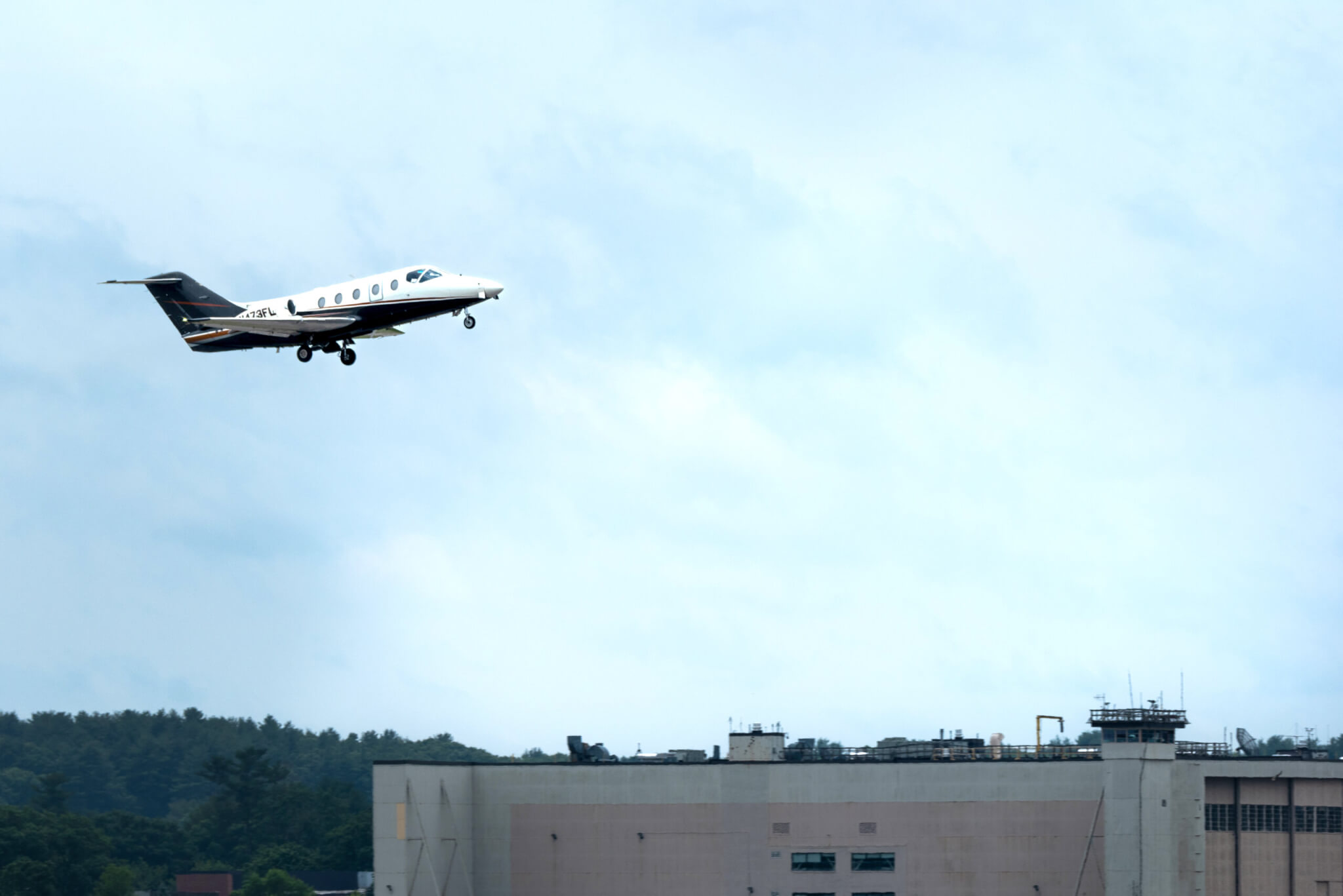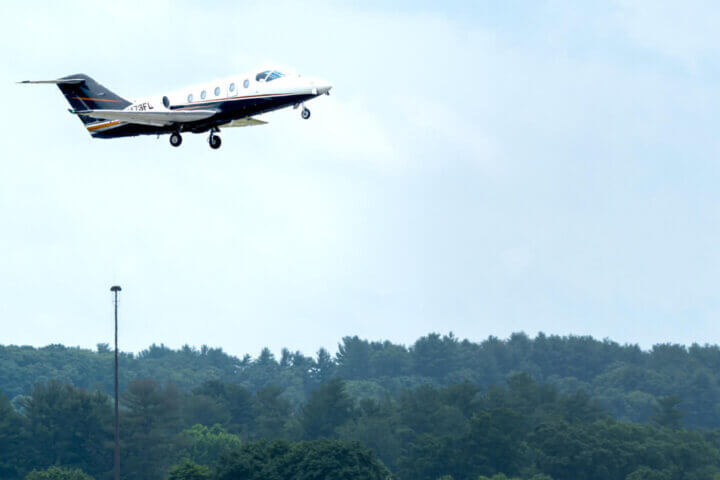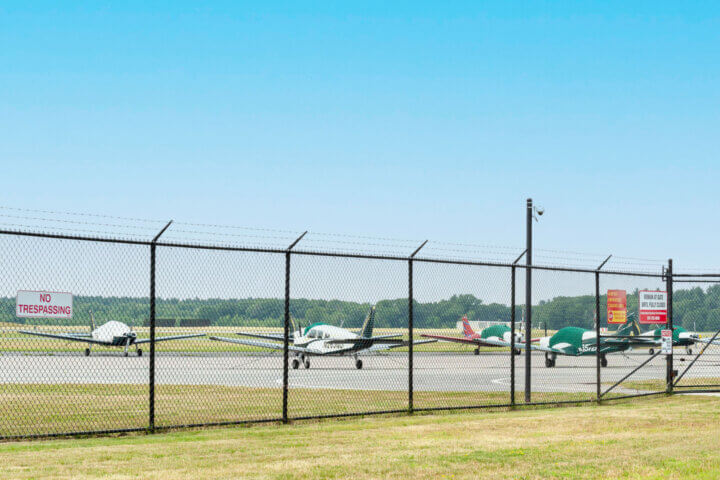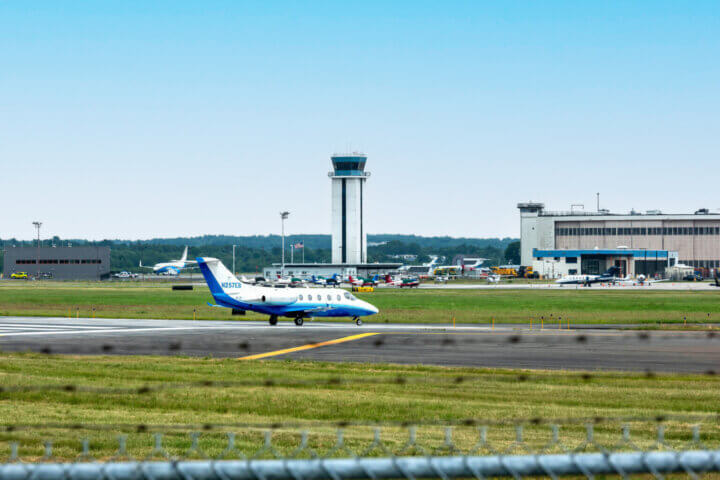By Erin Tiernan — Erin@theconcordbridge.org
Plumes of pollution from planes coming and going at Hanscom Field could pose long-term health problems for people living downwind, new research suggests.
Preliminary data from a town-funded study into jet emissions and the ultrafine particles they spew has become a major sticking point for Massport developers trying to move forward with a controversial project to expand hangar space and fuel capacity at the airport.
Ultrafine particles are not yet federally regulated but have been linked to heart disease, cancer, cerebral and autonomic dysfunction, low birth weight, and asthma. Tufts University Professor Neelakshi Hudda said she’s found “substantial” concentrations of the pollutants at sites in Concord, Bedford, Lexington and Lincoln — especially downwind of the runway.
“So far, our results show that mainly ultrafine particles generated by air aviation-related activities are being wind-blown off of the airfield,” Hudda told members of the Hanscom Field Advisory Committee at a June meeting.
“The impact is not limited to the Hanscom boundary, but it is pervasive in the communities around it.”
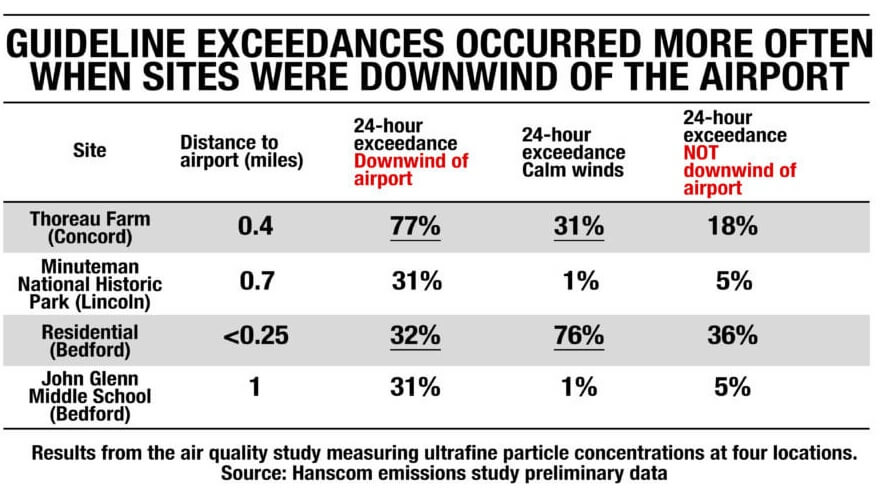
Exceeding thresholds
Hudda is a Lexington resident and plane emissions expert. She was hired by the airport’s four neighboring towns, the Hanscom Field Advisory Committee, and the Massport Community Advisory Committee to measure air quality in a five-mile radius around the airfield at sites in each town.
Particle concentrations “always” exceeded low threshold standards set by the World Health Organization and “often” exceeded high thresholds when downwind of the airport, Hudda said.
Barely a mile from the airport at Thoreau Farm in Concord, daily mean particle concentrations exceeded high thresholds on 77 percent of the days it was downwind of the airport compared with 18 percent when upwind.
At Concord’s Minute Man National Historic Park — a protected site about five miles away — researchers found pollution exceeded the daily mean high threshold 31 percent of the time when downwind compared to five percent when the wind was not coming from the airport.
Findings so far only represent half of the data. Sampling continues this summer and a final report is expected in October.
Hudda said she shared her data with the state environmental reviewers who are considering the expansion plan. Despite a lack of regulation from the U.S. Environmental Protection Agency on ultrafine particles, Hudda said their impact should not be ignored.
“Just because EPA is lagging behind on those regulations doesn’t mean the rest of the world is,” she said. “The World Health Organization does have UFP guidelines. The science is pretty robust on their health effects.”
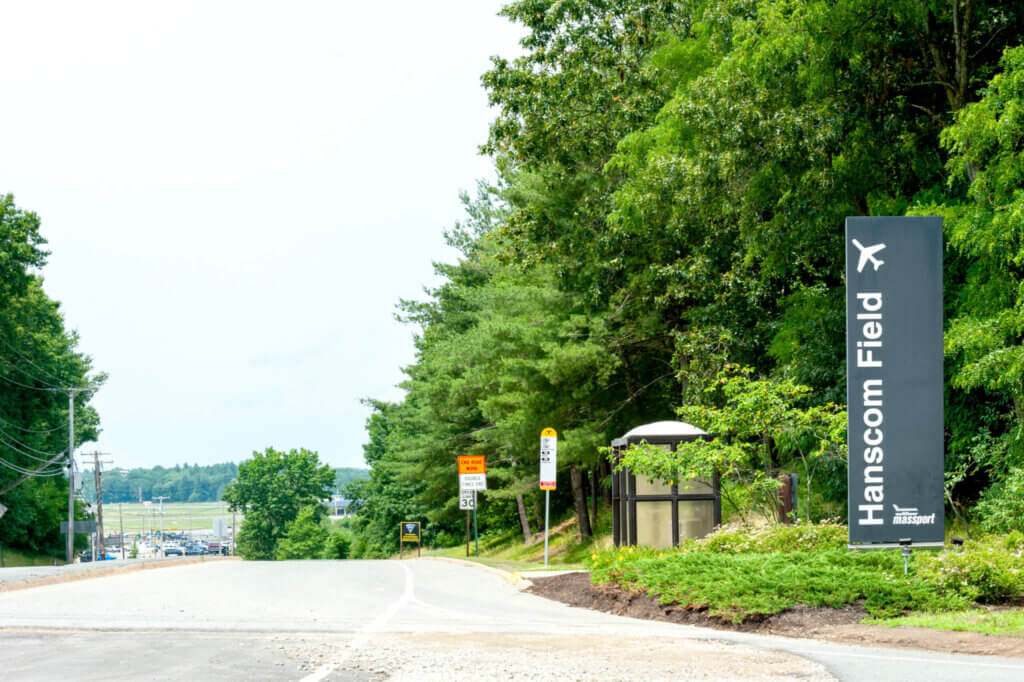
Regulators eye emissions
The Massachusetts Environmental Policy Act Office cited Hudda’s pending research in its rejection of Massport developers’ Draft Environmental Impact Review — delaying the project, but not halting it.
Energy and Environmental Affairs Secretary Rebecca Tepper instructed developers North Airfield Ventures LLC and Runway Realty Ventures LLC to respond to issues raised in 1,500 comments submitted by residents, interest groups and governmental organizations, including the National Parks Service.
The proposal would add 17 new hangars, renovate another and add 15,000 gallons of new fuel storage.
Critics claim the project would primarily serve private jets and expand one of the most pollution-generating forms of transportation just when Massachusetts is working to cut carbon emissions.
Developers contend the expansion would not boost noise or carbon emissions and would result in fewer flights. They say on-site parking would eliminate thousands of so-called “ferry flights” by planes that currently take off to park off-site and return later to fetch passengers.
A study funded by opponents heavily contradicted figures touted by developers, estimating that expanded capacity could add as much as 161,348 metric tons of carbon to the atmosphere annually.

Photo by Maia Kennedy Photography
‘Really catastrophic’
The threat of Hanscom expansion landed Minute Man and Walden on a list of the nation’s most endangered historic places. Save Our Heritage Executive Director Anna West Winter said it’s time proponents “do some soul searching about the fact that what they’re doing is inducing demand.
“What they’re doing is really catastrophic,” she said.
More flights would also mean more ultrafine particles in the air, threatening the health of anyone living nearby, Hudda said in comments to state regulators in which she pushed for more analysis from developers.
“I think they should be doing a far better job of disclosing the impact, and failure to do so would commit the surrounding communities to essentially a lifetime of elevated air pollution exposure without disclosure consent or any discussion of mitigation,” Hudda said.
Tepper instructed developers to conduct an emissions study and answer other questions in a supplemental Draft Environmental Impact Review.
Developers do not have a deadline to submit the supplemental review. A spokesman for them previously told The Concord Bridge they “will be responsive.”


